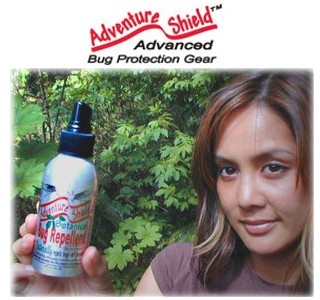Here is a link to an extensive study on the toxicity of DEET from the Pesticide Information Project, a cooperative effort consisting of Cornell University, Michigan State University, Oregon State University, and University of California at Davis.
http://pmep.cce.cornell.edu/profiles/extoxnet/carbaryl-dicrotophos/deet-ext.html
Here is an excerpt from that report:
"….Several cases of toxic encephalopathy associated with the use of Deet in children have been reported in the medical literature. The first reported case involved a 3.5 year old girl whose body, bedclothes and bedding were sprayed each night for two weeks with an insect repellent containing 15 percent Deet (12). Since then, five additional cases of toxic encephalopathy have been temporally associated with the use of Deet products in children, all of whom were females (Edwards and Johnson, 1987; de Garbino et al., 1983; Heick et al., 1980; Roland et al., 1985; Zadikoff, 1979). The toxic encephalopathy was characterized by agitation, weakness, disorientation, ataxia, seizures, coma and in three cases resulted in death. Autopsies conducted on two fatalities (Heick et al., 1980; Zadikoff, 1979) indicated edema of the brain, with one case presenting necrotic lesions in the cerebellum and spinal cord and an enlarged liver accompanied by microscopic changes (Heick et al., 1980). One child was reported to be heterozygous for ornithine carbamoyl transferase deficiency (a sex linked enzyme deficiency which may produce effects similar to those reported above) and it has been hypothesized that children with this enzyme disorder may be at greater risk of adverse reactions to Deet (Heick et al., 1980). This enzyme deficiency which usually causes infant death in males is of variable severity in females (Stanbury et al., 1983). Accidental and deliberate ingestion of Deet-containing products has produced neurotoxic effects similar to those described following dermal exposure (Tenenbein 1987, Zadikoff, 1979) (3)…"
sprayed each night for two weeks with an insect repellent containing 15 percent Deet (12). Since then, five additional cases of toxic encephalopathy have been temporally associated with the use of Deet products in children, all of whom were females (Edwards and Johnson, 1987; de Garbino et al., 1983; Heick et al., 1980; Roland et al., 1985; Zadikoff, 1979). The toxic encephalopathy was characterized by agitation, weakness, disorientation, ataxia, seizures, coma and in three cases resulted in death. Autopsies conducted on two fatalities (Heick et al., 1980; Zadikoff, 1979) indicated edema of the brain, with one case presenting necrotic lesions in the cerebellum and spinal cord and an enlarged liver accompanied by microscopic changes (Heick et al., 1980). One child was reported to be heterozygous for ornithine carbamoyl transferase deficiency (a sex linked enzyme deficiency which may produce effects similar to those reported above) and it has been hypothesized that children with this enzyme disorder may be at greater risk of adverse reactions to Deet (Heick et al., 1980). This enzyme deficiency which usually causes infant death in males is of variable severity in females (Stanbury et al., 1983). Accidental and deliberate ingestion of Deet-containing products has produced neurotoxic effects similar to those described following dermal exposure (Tenenbein 1987, Zadikoff, 1979) (3)…"
",,Signs and symptoms of more subtle neurotoxicity have also been associated with extensive dermal application of Deet in adults. Questionnaire results indicate that Everglades National Park employees having extensive Deet exposure were more likely to have insomnia, mood disturbances and impaired cognitive function than were lesser exposed co-workers (McConnell et al., 1986). A young male who repeatedly applied Deet to his skin prior to spending prolonged periods in a sauna was reported to develop acute manic psychosis characterized by aggressive behavior, delusions and hyperactivity (Snyder et al., 1986) (3)…."

